EDM (Electronic Dance Music) is more than simple beats that make you move.
Its vibrant combination of melodies, harmonies, and rhythms ignites emotions and creates unforgettable experiences.
At the heart of these emotions lie EDM chord progressions.
These sequences of chords breathe life into tracks 一 dictating the mood, energy, and the very soul of a piece.
But harnessing the full power of these progressions requires a deep understanding of the most iconic ones in the genre.
And that’s precisely what we will be breaking down for you today.
In today’s article, we’re going to be covering:
- The basics of scales, intervals, and chords ✓
- How to create compelling EDM chord progressions ✓
- The 8 most popular EDM chord progressions ✓
- Crafting the perfect bass line for your progression ✓
- Using the piano roll for distinct chord sequences ✓
- Sound selection and design for resonant progressions ✓
- Advanced techniques for producing professional EDM chords ✓
- Much more ✓
By the end of this article, you’ll be armed with the knowledge of the most sought-after EDM chord progressions and the skills to manipulate them with a professional edge.
You’ll understand how to craft EDM tracks that resonate deeply.
As well as have the confidence to innovate and experiment to produce addicting and unique variations.
So, let’s dive in…
Table of Contents
- What are EDM Chord Progressions?
- The Importance of Chord Progressions in EDM Music
- Chord Progression Basics: Breaking it Down
- The Most Popular EDM Chord Progressions
- #1. AM F G M (VI-IV-V-I): The EDM Classic
- #2. i – VI – iv – VII: A Minor Magicial Chord
- #3. I–V–vi–IV: The Progression EDM & Pop Lovers Rave About
- #4. iv – v – VI – VI – i – III – VI – VI: Complexity in Rhythm
- #5. IV – V – vi – I: Catchy & Straightforward
- #6. i–III–VII–VI: Emotional Undertones At Their Finest
- #7. i–VI–VII: The Club Hit Formula
- #8. VI – VII – v – i – VII: Playing With Bass Lines
- Bonus: Using the Piano Roll for Unique Chord Progressions
- EDM Chord Progressions: Final Thoughts
What are EDM Chord Progressions?
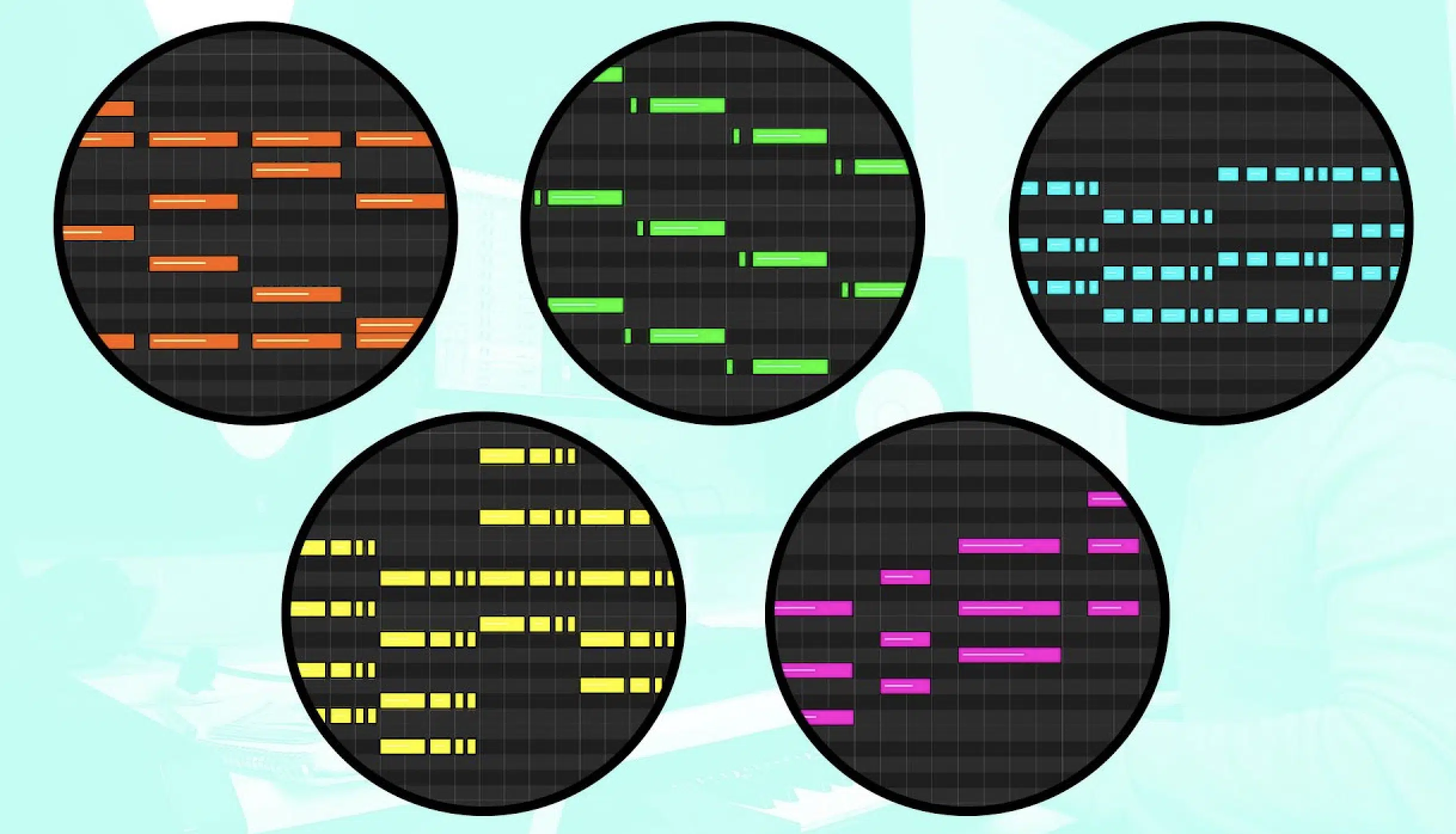
Electronic Dance Music (EDM) has blessed our speakers and festival stages for years.
One of the many aspects that make EDM so captivating is the structure of its melodies and beats, an integral part of which is the EDM chord progressions.
EDM chord progressions are essentially sequences or orders of chords that form the foundation of a track.
These sequences are the melodic road maps that guide listeners through the musical journey’s highs and lows (tension & release).
They are the heroes behind those catchy melodies that you find yourself humming even days after hearing a track.
Think of them as the underlying element that ties together all the elements in a track 一 from bass and beats to synth and vocals.
Whether consciously noticed or not, these EDM chord progressions evoke specific emotions in listeners, keeping them hooked.
The proper EDM chord progression can turn an ordinary track into a festival anthem or a heartfelt ballad.
This is the magic and power of EDM chord progressions, which you’ll learn today.
Writing chord progressions is an art form, whether it’s the uplifting sound of a major chord or the introspective resonance of minor chords.
To master it, one must delve deep into the most popular chord progressions that have shaped the music landscape.
Which is exactly what we’re covering in the following section.
The Importance of Chord Progressions in EDM Music
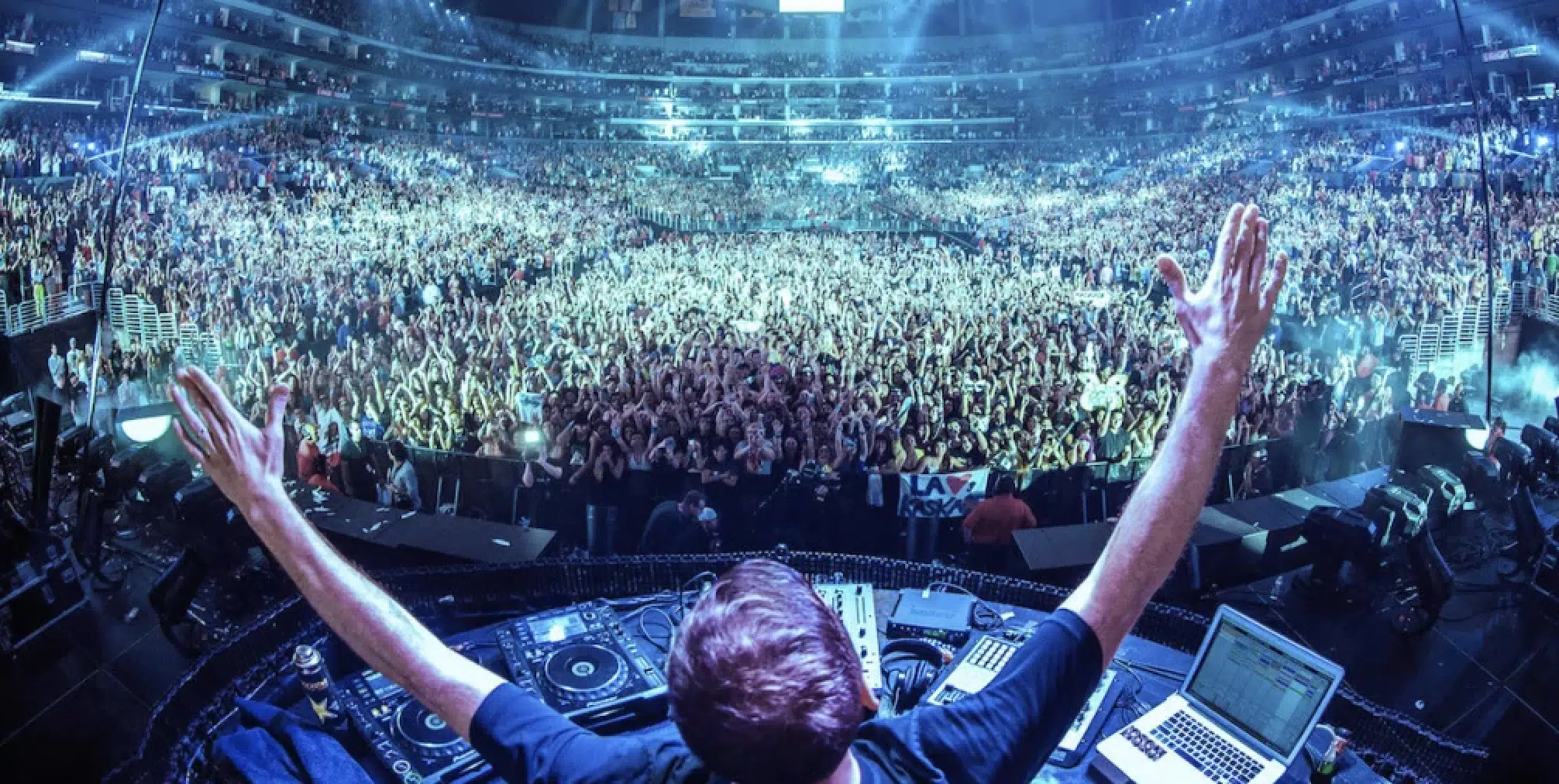
EDM has its roots deeply entwined with dance music.
This means every track aims to move its audience and get them on their feet 一 which is where EDM chord progressions come in.
Certain factors you’ll need to know to dictate your EDM chord progressions, like:
- The rise and fall of chords
- Their arrangement
- Intriguing transitions
Building chord progressions with high energy can push the track to become a mainstage banger, while a mellow one can make it a perfect fit for a lounge playlist.
In the vast genre of EDM music, where differentiation is crucial, chord progressions become the signature of many artists.
Remember Avicii’s legendary song “Wake Me Up”?…
The distinct chord progression became synonymous with the track and, in many ways, defined its massive success.
While beats, drops, and synths get the spotlight, the chord progressions silently shape the overall character of an EDM song.
They’re essential for establishing mood, ensuring variety, and, more importantly, making a track memorable.
So, to create catchy chord progressions, you’ll need to have a solid understanding of the basics.
Chord Progression Basics: Breaking it Down
Transitioning into the nitty-gritty, let’s dissect the basics of EDM chord progressions so you can create your own chord progressions like an expert.
-
The Roman Numeral System Explained
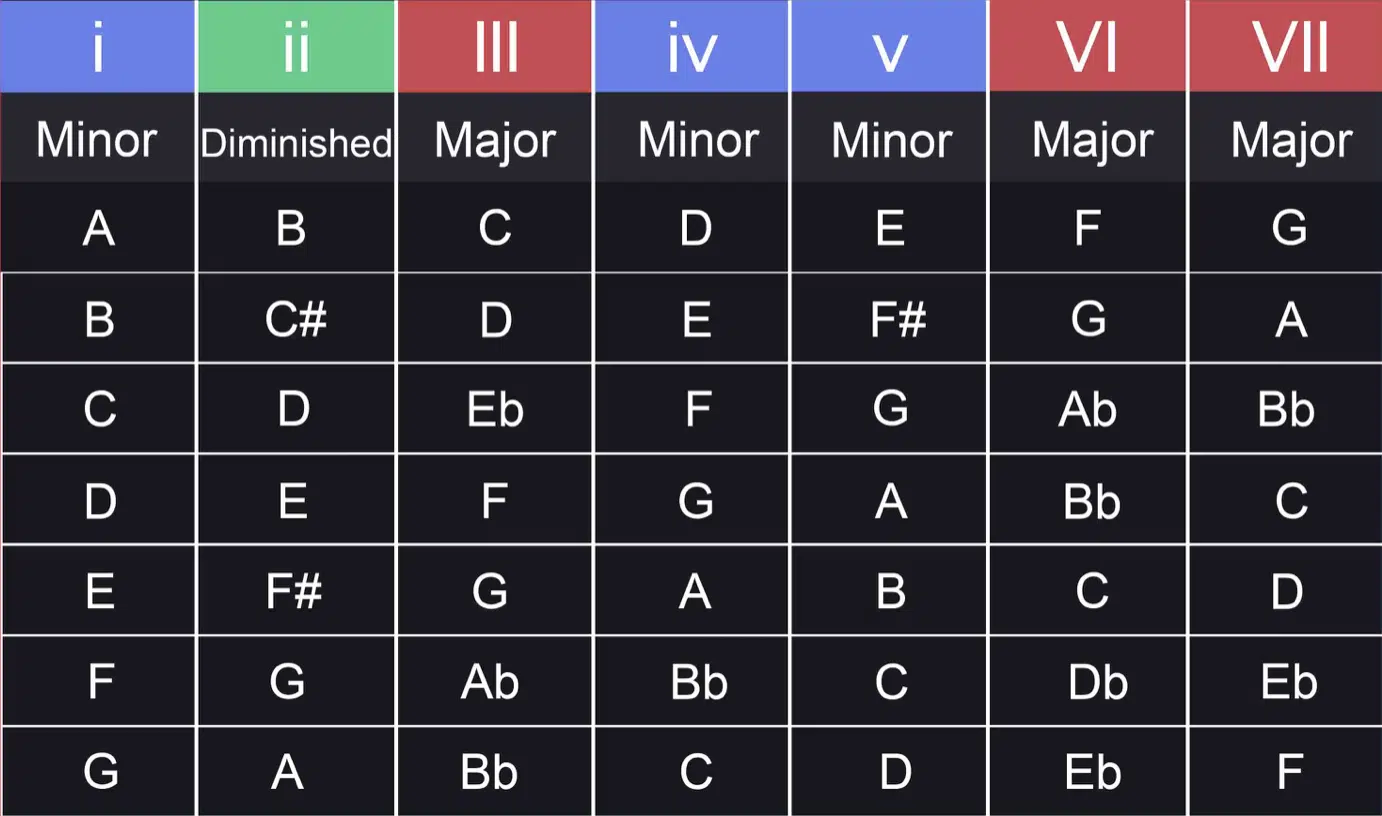
If you’ve ever been puzzled by notations like IV, V, vi, v, ii, iii, v, iv, etc. concerning chords, you’re about to get enlightened.
Roman numerals are the heart of understanding, manipulating, and mastering chord progressions.
Each numeral represents a chord’s position in a specific key (like a major and minor key).
For example, in the key of C major:
- The I chord 一 C
- The IV chord 一 F
- The V chord 一 G
The capitalized letters represent major chords, while the lowercase letters represent minor chords.
This system offers a standardized way to denote chords across different keys, so the IV – V – vi progression in C major becomes F – G – A minor.
By using Roman numerals, you can easily transpose or shift your chord progressions to different keys.
This will ensure versatility and flexibility in your tracks.
-
The Magic of Diatonic Chords For Catchy Chord Progressions

Diatonic chords (like diatonic triads) are your trusty allies when creating EDM chord progressions.
These distinct chords are formed using notes from a single major or minor scale, and diatonic chords fit naturally into any EDM song.
In the key of C major, diatonic chords would be:
- C
- D minor
- E minor
- F
- G
- A minor
- B diminished
This is where the harmony in your EDM track comes to life, and diatonic chords play a significant role.
The beauty of these chords is their natural compatibility.
They inherently sound good together 一 making them a solid foundation for any EDM chord progression.
By understanding diatonic chords and the scales they originate from, you set yourself up for success.
Meaning, your EDM chord progressions will be melodically coherent and genuinely epic.
-
Major Keys and Minor Keys: Building Your Foundation
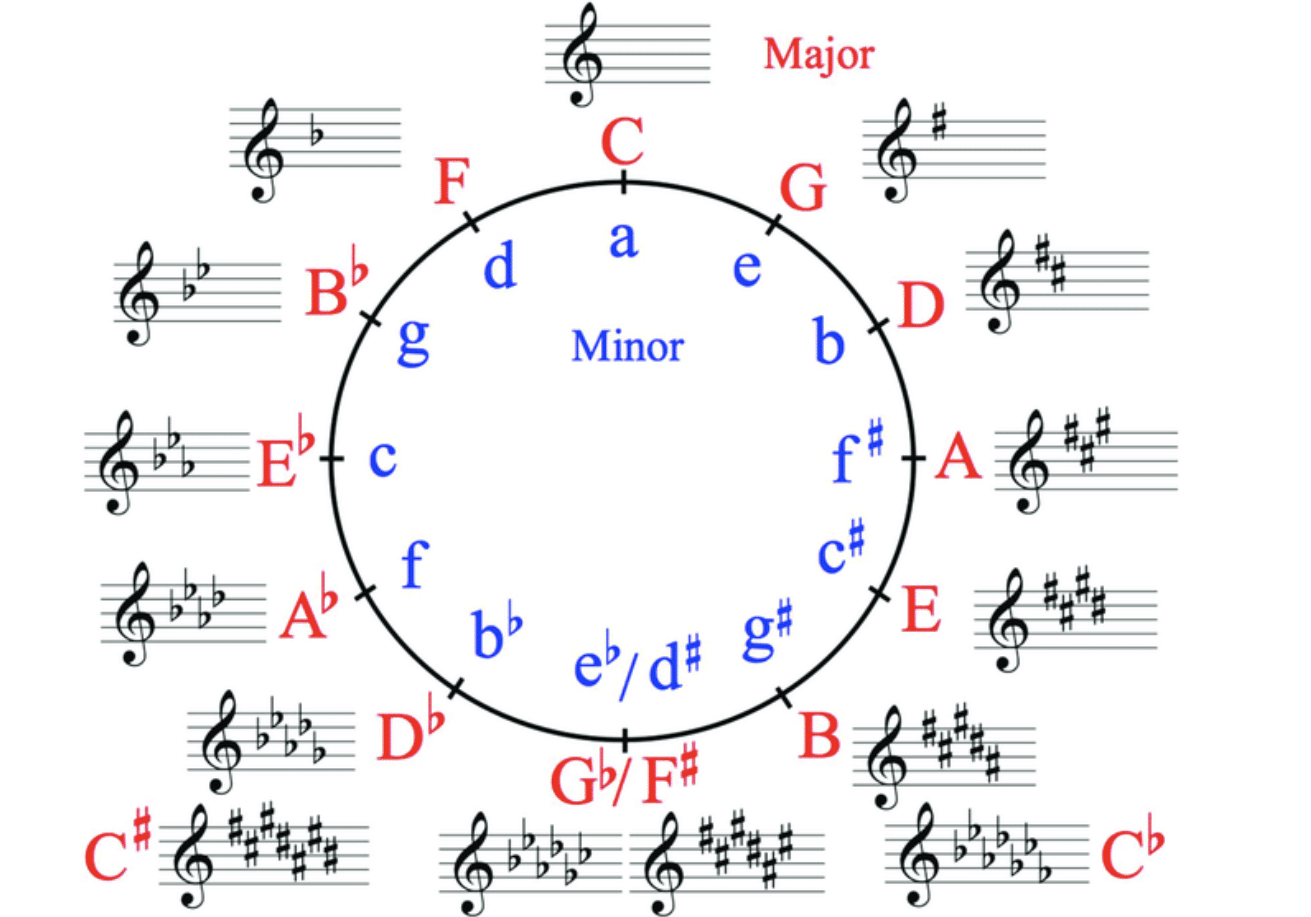
Before diving deeper into chord progressions, one must grasp the difference between major keys and minor keys.
- Major keys 一 Resonate with happiness/brightness; think uplifting pop music.
- Minor keys 一 Have a more somber, deep, and sometimes eerie quality.
They’re perfect for creating more emotional or intense sections in your tracks.
The key you choose sets the tone for your track.
If you want a happy, energetic vibe, you might opt for a major key; for something moodier, a minor key would be your go-to.
Understanding this fundamental difference between major and minor keys is crucial.
It’s like choosing the color palette for a painting.
The shades of major keys and minor keys will appropriately color the emotions evoked by your unique EDM track.
-
Music Theory Essentials for EDM Producers
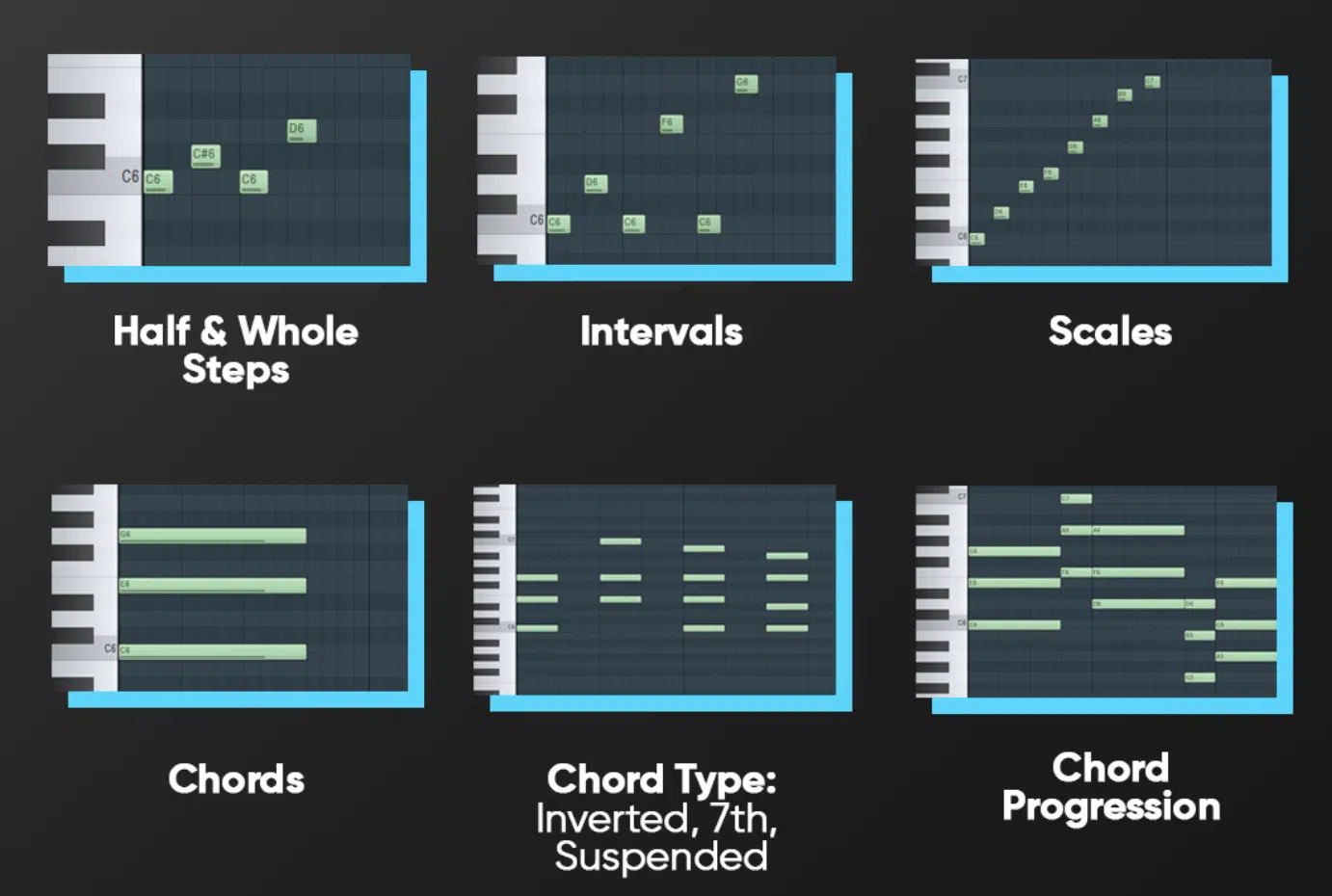
Music theory might seem like an intimidating list of rules and terminologies, but it’s essentially a structured understanding of how music works.
This foundational knowledge can offer invaluable insights into creating the most popular chord progressions.
Triad Chords are the simplest of chords but can produce powerful effects.
They consist of three notes:
- The root
- The third
- The fifth
For example, in the C major triad, you have the notes C (root), E (third), and G (fifth).
These diatonic triads form the building blocks of most musical compositions, and their variations lead to major, minor, augmented, and diminished chords.
Scales are sequences of notes arranged in ascending or descending order.
The most common scales in Western music are the major and minor scales, providing a framework for melody and harmony in music.
For example, the C major scale includes the notes C, D, E, F, G, A, and B.
The choice of scale dictates which notes and chords will harmonize well within a piece.
Intervals refer to the distance between two pitches; they’re the backbone of harmony and can be described as:
- Major
- Minor
- Perfect
- Augmented
- Diminished
Recognizing intervals and understanding their sound is crucial.
For instance, the distance between C and E is a major third 一 while between C and Eb is a minor third.
This distinction affects the emotion and tension of the music.
Stimulating these fundamental elements of music theory helps you efficiently break the rules, as you’ll know them so well.
They allow EDM producers to intuitively craft and modify chord progressions, ensuring the tracks sound epic and emotionally resonate with listeners.
The Most Popular EDM Chord Progressions
Delving into electronic dance music, certain chord progressions consistently emerge as fan favorites 一 driving the melodies of countless hits.
Let’s explore some of these iconic EDM chord progressions (like i-VI-iii-VII).
They won’t only shape your tracks’ identity, bass line, and melody, but also capture the essence of the genre itself.
#1. AM F G M (VI-IV-V-I): The EDM Classic
The VI-IV-V-I progression stands out prominently when you speak about chord progressions that have defined an era of EDM music.
In the key of C major, this progression translates to:
- Am
- F
- G
- C
An energetic presence across many tracks, this EDM chord progression offers a compelling journey from anticipation to resolution.
It will naturally sound good in EDM songs and seamlessly glide through chords to evoke various emotions.
The mix of minor and major chords crafts a story of tension and release (which is fundamental in electronic dance music).
It is no coincidence that tracks like David Guetta’s “Titanium” employ this EDM chord progression.
The song’s universal appeal and the way it resonates across different age groups and cultures is a testament to the timeless nature of this chord sequence.
NOTE: Understanding the dynamics of this chord progression can be a game-changer.
By experimenting with instrumentation, rhythm, and arrangement, they can tailor the VI-IV-V-I structure to fit different sub-genres 一 from trance to future bass.
#2. i – VI – iv – VII: A Minor Magicial Chord
The i-VI-iv-VII chord progression offers a blend of welcomed depth and introspection.
For example, in the key of A minor, it would be:
- AM
- F
- Dm
- E
This combination elicits a ‘moodier’ ambiance than the more euphoric major progressions.
It is versatile and suitable for tracks ranging from deep house vibes to more contemplative ambient pieces.
ZHU’s “Faded” is a stellar example of this progression’s effectiveness.
The track manages to carve a unique soundscape (haunting, ethereal, and yet utterly danceable) 一 leaning heavily on the chord structure for its emotive pull.
When EDM producers tap into this minor magic, they access a palette of emotions that can be further accentuated with sound design, instrumentation, and mixing techniques.
#3. I–V–vi–IV: The Progression EDM & Pop Lovers Rave About
Undoubtedly, the I-V-vi-IV chord progression is one that even those unfamiliar with music theory have inadvertently tapped their feet to.
In the context of C major, this becomes:
- C
- G
- Am
- F
It’s a chord sequence that’s synonymous not just within EDM but across the broader spectrum of pop music and hip hop.
Its cyclical nature ensures a perpetual sense of movement and evolution.
A great example of a popular EDM song that exemplifies this progression’s charm is The Chainsmokers’ “Closer.”
Despite its simplicity, the progression forms the backbone of this catchy anthem 一 offering a seamless blend of melancholy and euphoria.
Given its widespread use, you can try employing innovative sound design, rhythmic variations, and vocal arrangements.
This way, it will differentiate your track and give a fresh spin to this beloved EDM chord progression.
#4. iv – v – VI – VI – i – III – VI – VI: Complexity in Rhythm
Diving deeper into the complexity of rhythm and melody, this EDM chord progression, when adapted to A minor, translates to:
- Dm
- Em
- F
- F
- Am
- C
- F
- F
This intricate sequence is not as straightforward as its counterparts but offers a rhythmic diversity that’s unparalleled.
This allows for captivating builds and drops that can set your music apart.
Flume’s “Never Be Like You” stands out as a track that leverages just the same chord progression structure.
The song weaves an intricate tapestry of sound 一 taking listeners on a roller-coaster of auditory experiences.
For EDM producers seeking to challenge the norm and introduce unexpected twists in their tracks, this EDM chord progression serves as a platform for experimentation.
#5. IV – V – vi – I: Catchy & Straightforward
This EDM chord progression has a remarkable charm due to its simplistic allure.
When in the key of C major (not C minor), this translate to:
- F
- G
- Am
- C
A sequence that intertwines the joy of major chords with the touch of a minor chord, this EDM chord progression offers a well-rounded musical experience.
NOTE: The resolution from the minor chord back to the major provides an innate sense of return and fulfillment.
Swedish House Mafia’s iconic track “Don’t You Worry Child” harnesses the power of this same chord progression.
This anthem, with its massive drops and heartfelt lyrics, remains unforgettable 一 largely due to the chord backbone supporting its melodies and intracacies.
For EDM producers, mastering this chord progression can be an essential tool.
It lends itself well to both upbeat festival bangers and more mellow, radio-friendly hits.
#6. i–III–VII–VI: Emotional Undertones At Their Finest
The i-III-VII-VI chord progression is filled with emotive swing and groove.
In the key of A minor, this EDM chord progression translates to:
- Am
- C
- G
- F
This EDM chord progression (from the root minor chord, through major transitions, and back to the major VI chord) crafts a narrative of emotional highs and lows.
“Stole the Show” by Kygo is a testament to the allure of this hypnotizing chord progression.
The tropical house vibe, combined with the emotive pull of the chords 一 ensuring a musical journey filled with euphoria.
Producers leaning into more soulful or introspective sub-genres of EDM will find this progression especially beneficial.
#7. i–VI–VII: The Club Hit Formula
The i-VI-VII chord progression is a very popular choice amoungst house parties and festivals.
Simplified yet impactful, in A minor this EDM chord progression is:
- Am
- F
- G
Perfect for club bangers and anthems, this three-chord magic creates an infectious loop that’s hard to escape.
The tight-knit chord progression ensures that the energy levels remain high throughout a track.
Martin Garrix’s “Animals” exemplifies this to perfection.
The raw energy, pulsating drops, and rhythmic intensity of the track owe a lot to its underlying chord structure.
To make the crowd move, this EDM choord progression is an invaluable asset.
#8. VI – VII – v – i – VII: Playing With Bass Lines
The real charm of the VI-VII-v-i-VII chord progression lies in its ability to seamlessly integrate with dynamic basslines.
This EDM chord progression, when in A minor, reads as:
- F
- G
- Em
- Am
- G
It crafts a landscape where the lower frequencies can truly shine and bass lines dominate.
“Lean On” by Major Lazer & DJ Snake is a track where this progression’s synergy with the bassline becomes evident.
The iconic lead synth, coupled with the chord structure, ensures that listeners are hooked from the get.
NOTE: If you produce genres like future bass, trap, or any sub-genre where bass plays a pivotal role, you’ll find this EDM chord progression exceptionally handy.
Bonus: Using the Piano Roll for Unique Chord Progressions
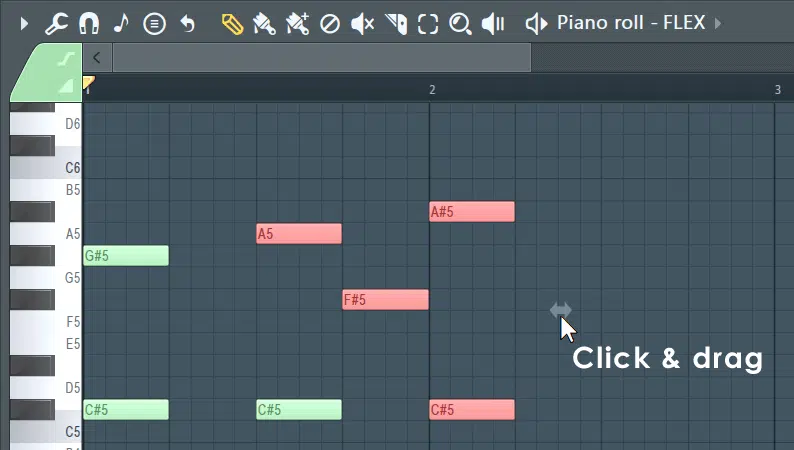
The piano roll in your DAW is more than just a tool to input notes or learn about the major chord tricks.
It’s a canvas that allows for the exploration and creation of unique electronic music chord progressions.
By visually seeing the notes laid out, you can experiment with:
- Inversions
- Extensions
- Borrowed chords from other scales
Layering is another powerful technique heard in most EDM songs that can be achieved using the piano roll to help you out when you’re writing chord progressions.
By stacking multiple instances of similar chords, but with varied voicings or octaves, you can achieve a richer, fuller sound.
Never be afraid to break the rules; I can’t emphasize this enough!
While music theory provides guidelines, some of the most iconic EDM tracks (like Avicii – Wake) have emerged from outside-the-box thinking.
The piano roll encourages such experimentation.
PRO TIP: Utilize the MIDI effects and arpeggiators in conjunction with the piano roll.
This can lead to unexpected and delightful chordal discoveries, like IV-vi-V, V-VI-Vii, vi-iii, iii-iv, minor one chord variations, F-G-A-B, or the same chord progressions you hear in EDM or pop music.
EDM Chord Progressions: Final Thoughts
When it comes to EDM, chord progressions are the backbone that elevates a track from the ordinary to the extraordinary.
Their intrinsic value lies in their ability to infuse uniqueness, intrigue, and emotion into every beat and melody.
It is through these sequences of chords that songs captivate listeners; transporting them into a state of rhythmic bliss.
And when crafted impeccably, these EDM chord progressions not only make your tracks addictive but also create a strong connection with your audience.
While chord progressions form the foundation, the beats and percussion that accompany them bring the track to life.
To help you master the art of EDM chord progressions, you’d want your tracks to sound impeccable.
This is wheree this Free EDM Drum Kit 一 an invaluable kit tailored for EDM producers.
With over 45 drum samples, loops, and MIDIs, this kit is crafted to make your tracks sound cleaner, crisper, and more polished than ever before.
Every sample is 100% royalty-free, granting you the freedom to weave them into your tracks immediately.
Just as the right chord progression can set the tone for your track, having the perfect drum kit can elevate it to professional levels.
With the tips and tricks included in this article you’re well on your way to creating epic EDM chord progressions that not only enhance your workflow, but get your music to the top of the charts.
Until next time…







Leave a Reply
You must belogged in to post a comment.